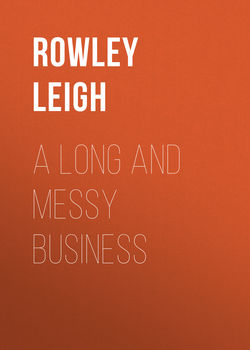Читать книгу A Long and Messy Business - Rowley Leigh - Страница 62
На сайте Литреса книга снята с продажи.
ОглавлениеNot Just a Pretty Picture
Sea Bass en Papillote
A chef in France has banned his customers from taking
photographs of his food, citing his ‘intellectual copyright’
as having been breached by diners who might otherwise
have breathed in a dish’s aroma, tucked in and spoken to
their companions. I agree that it is a silly, slightly rude
custom that completely misses the point, but I would
never impose such a ban. It is their food and their dinner
that is being spoilt. Nevertheless, it is a worrying trend.
I blame the TV. Ever since food programmes stopped
being fun and started taking food too seriously, the way a
dish looks has become more important than the way it
smells or tastes. I recently experienced a dish that
illustrated this unbalanced visual emphasis. It was sculpted
on a black rectangular plate in the shape of a tree. The
leaves were a blossom of ice-cold creamy emulsion that
tasted of very little. Among the leaves were little spheroid
charms in purple, green and orange, with ever more bizarre
flavours. At the base of the tree was a collection of small
fruits of the forest, which included mushrooms fashioned
out of foie gras, shards of Ibérico ham and some micro
leaves. Not content with his work, the chef had directed the
waiter to come over with a dredger and shower ‘snow’ of
dehydrated essence of some worryingly unidentifiable
substance over the ensemble. Still worried he might have
left something out, the chef came over and shaved some
excellent but redundant truffles over the surface. With chef
finally satisfied, I was free to savour the dish. It was visually
arresting and tasted quite repulsive.
There is a deeper problem. Food becoming pretty
pictures is just another symptom, I fear, of our alienation
from the processes behind our food and our inability to
deal with them. In Hong Kong it is considered poor form
to buy dead fish – it is usually sold still flapping around in
a tank – and chickens are often sold alive and dispatched
in front of you. I am not suggesting that we should adopt
or return to these practices, but a renewed connection with
the feel, smell and taste of what we eat might be in order.
This dish is something of an antidote to modern trends.
It arrives at the table in a paper parcel and then has to be
negotiated before it can be consumed free of bones. It is
simple to cook, looks like nothing at all and is, of course,
aromatic, full of flavour and tastes of what it is. Pick the
bones, as they say, out of that.
92
